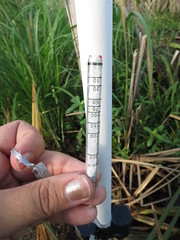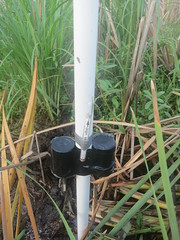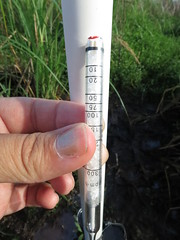Images above are of the closest weather station to this site from 8/3/12.
This is a follow-up to the research note that details tubes after 8 hours: http://publiclaboratory.org/notes/shannon/8-2-2012/bayou-sauvage-draeger-tubes-after-8-hours
Again, after 24 hours (8/3/12 at 9am), no changes to the tubes. Matthew from Rhus made a comment in an email thread that we should follow-up with: "I just did a small field test of Draeger tubes as well, with similar results.. i.e. no reaction on the tube. I'm wondering now if the PPM in the marsh is going to be high enough to measure on the tubes. How smelly is the marsh you are looking at? ( I have found a spot that is rather rank...) Do we have reason to think that a salt marsh will have a PPM above the 1.3ppm minimum that the tubes register? You can use the equations in the instructions to calculate a PPM over a longer time interval, but I'm not sure that they tubes are meant to be accurate beyond 8 hours. "









2 Comments
One of the things about the draeger tubes I've used, you have to force air through them to get them to work. These pictures all show one end sealed. They do not work in this condition. Both ends must be open. You must also be able to measure the flow rate through the tube. The tube is used incorrectly in this application.
Reply to this comment...
Log in to comment
Maybe these are different, but every draeger I've used(many hundreds)has always required breaking the top for airflow through the tube.
Reply to this comment...
Log in to comment
Login to comment.